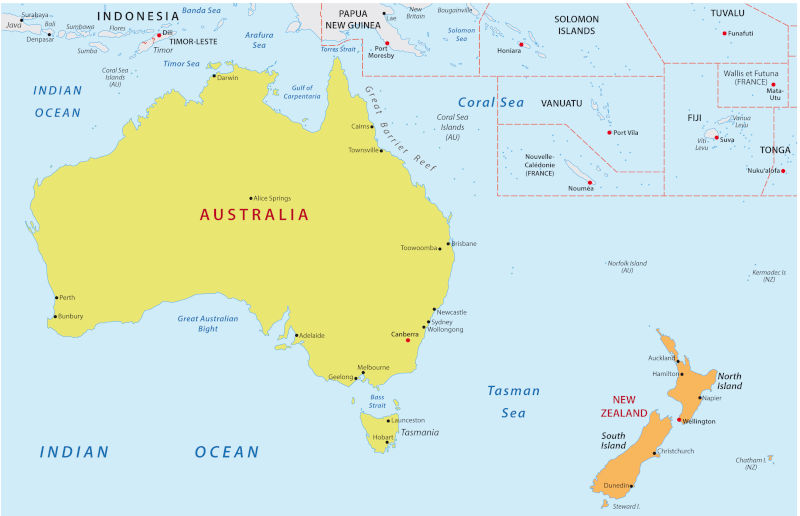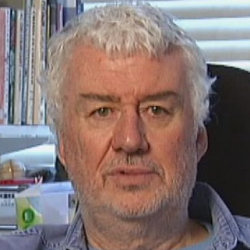AUKUS and Aotearoa New Zealand: the costs of attraction and repulsion
April 6, 2023
When the ALP Government led by Anthony Albanese came to power in 2022 it was confronted by the AUKUS minefield laid by its predecessor, the LNC Government led by Scott Morrison.
It did, however, have options, one of which was to reject outright the Babylonian extravagance and complexity of arrangements consequent to a process marked by deceit, dishonesty, and corruption. This refusal then created a second minefield for Aotearoa New Zealand one that, now, cannot be circumnavigated; indeed, any course that is charted will almost certainly impinge on its recent independence in foreign policy.
Here, context, history, and little myths are important. Certainly, there are close affinities between the two countries indeed, they are frequently held, in conjunction with New Guinea and neighbouring islands in the Pacific Ocean, to constitute a region known as Australasia.
Moreover, myth, legend and historical narrative have also combined to suggest a remarkable identity of ability and interests in war fighting - from the Gallipoli landings and the origins of an ANZAC identity through to the Vietnam War. German Field Marshall Erwin Rommel, after facing a combined Australia New Zealand infantry division in North Africa, is reported to have said that, If I had to take hell, I would use the Australians to take it and the New Zealanders to hold it.
And as late as 1983, it was commonplace for both the political leadership and defence and strategic analysts in both Australia and New Zealand to proclaim, the two countries constitute a single strategic entity.
Though also proclaiming themselves as variations of “God’s own country,” their mental state, both as colonies and post-colonial independent states, has created a chronic disorder which included chronic anxieties and fears, though different in each case, and a condition that the essayist and critic Bill Pearson accurately identified as “fretful sleep.”
This result in differences in style, too: whereas Australia is conscious of its continental size and riches arising from natural resources, and is boastful of punching above its weight, New Zealand has generally been given to modest interventions on the unassailable basis that its resources are generally modest. Henry Grattans observation on the attraction repulsion nature of another asymmetric dyad, Irelands proximity to England is, if geographically modified, applicable: the Tasman Sea precludes union just as the Pacific Ocean forbids separation.
From the mid-1980s on, notable divergences have come to the fore, caused by such developments as the non-nuclear demarche taken by the New Zealand Labour Government under the Prime Ministership of David Lange.
In Washington, the country was first defined as a pathogen a source of New Zealand Disease which could well be infectious. It then became, by way of contradiction, a place of no significance: in the words of a senior US government official, no more than a pissant little country just south of nowheresville.
What occasioned special outrage, however, was the heretical nature of the demarche itself a break with the central covenant of the alliance which was the genocidal-suicidal pact which underpins nuclear deterrence.
This had the initial effect of excluding New Zealand from the arrangements established under the ANZUS Treaty of 1951, forcing subsequent Governments in New Zealand to think somewhat more independently, with the effect that previous strategic thinking of a critical nature evident but not emphasised during the Vietnam War - became more pronounced.
Ultimately, though, this proved to be a bracing experience in resilience: what evolved was a sense that, though costs were incurred (including Frances sinking of the Rainbow Warrior in Auckland harbour) the countrys international standing as a principled actor, specifically on matters nuclear, was enhanced; some thought it exemplary.
It is even possible to describe the demarche as an unheralded, but ironic success. Domestically, the non-nuclear policy enjoys strong and stable bipartisan support; Aotearoa New Zealand remains within the Five Eyes intelligence grouping; and the United States is the countrys 3rd largest trading partner.
AUKUS has the potential to radically revise the narrative regarding standing. Early reactions were particularly low key and pro forma. Consistent with the New Zealand Nuclear Free Zone, Disarmament and Arms Control Act of 1987, the SSNs would be prohibited from the Zone; the non-nuclear elements of the agreement were given a cautious welcome.
Until recently, there was little discussion, let alone debate over what Australia was intent on acquiring and what it might mean for Aotearoa New Zealand. This, probably, was an exercise in pragmatism.
In Wellington there was hope that the ALP government would be amenable to addressing a raft of issues which had become corrosive of good trans-Tasman relations, and it was understandable that irritating Canberra over decisions and strategies that were evidently impervious to criticism could well be counter-productive
But if pragmatism determines the governments discretion, it holds no sway with two former, highly regarded Prime Ministers Labours Helen Clark and Nationals Jim Bolger - and, surprisingly, the opposition National Partys spokesman on Foreign Affairs, Gerry Brownlee. With regard to both the anti-China rationale for the SSNs, and the SSNs themselves, their reported comments are excoriating and in close harmony with those of former Australian Prime Minister, Paul Keating.
The inference to be taken, therefore, is that the Labour Government led by Prime Minister, Chris Hipkins, is under close examination by both those that might be termed the guardians of the post-1983 tradition of independent foreign policy thinking and acting, and an electorate that has embraced non-nuclearism.
The focus is on the response to the US invitation to join the second pillar of AUKUS which will involve defence technologies associated with the overall nuclear-powered submarines, such as artificial intelligence, quantum computing, and advanced information technology, resources integral to national security that all states, are coming to regard as essential (whether or not they can afford them).
To put this simply, it is an invitation to become part of something so well-resourced that it is akin to a Manhattan Project that is scheduled to run for decades rather than a handful of years. But it requires the government of Aoteraroa New Zealand to resolve at least two urgent, but simple quandaries.
First, is the question of whether the AUKUS SSNs be disaggregated from both the traditional defence relations between Australia and Aotearoa New Zealand; second, can the so-called second tranche, or pillar of AUKUS be regarded as somehow distinct from the SSNs of the first. These require an urgent answer and it cannot be in the affirmative because if Australia was not going to acquire SSNs, there would be no second pillar.
The response so far has taken the form of the Defence Minister, Andrew Little, saying that the government is exploring the possibilities while, at the same time, proclaiming the mantra that any participation would not be allowed to compromise our legal obligations and our moral commitment to nuclear-free.
Among the factors which he omitted to acknowledge were the potential costly consequences for Aotearoas relations with China, the countrys largest trading partner, if the invitation is accepted, and the damage to its reputation and standing as a progressive and independent actor on nuclear questions.
Both have withstood the fact that, after the non-nuclear initiative of the 1980s, and well before the advent of AUKUS, Aotearoa remained active in the Five Eyes intelligence arrangements and its contributions through, for example, the stations at Waihopai and Tangimoana. Even then, they prompted the question as to whether they could be firewalled from the nuclear dimensions of the major parties to the agreement. Which is to say that the independence practised then, was also highly qualified.
If the government of Aotearoa New Zealand becomes a contributor to the second pillar, then its independent foreign policy will be in need of requalification probably to the point of extinction. In brutally honest terms, AUKUS is an instrument of sovereignty loss and the benefits which flow from it are poisonous to independence.
Another omission too painful for Wellington to think about because it will be inevitable regardless of the decision at government level, but particularly acute if current principles rule the day and its in negative - is that the two pillars of AUKUS, should it actually proceed to fruition, will create turbulent conditions in trans-Tasman labour relations. Every project within AUKUS will act as a vortex into which is sucked highly skilled labour from all available sources, including Aotearoa New Zealand.
This leads to six conclusions: first, Aotearoa New Zealand will be involved one way or another; second, any government decision to accept inclusion in the second pillar of AUKUS cannot reconciled with declared non-nuclear policies; third, it would be a decision against the well-founded criticisms of AUKUS on both sides of the Tasman; fourth, the standing of Aotearoa New Zealand among those who have lauded it down the years would be irreparably damaged; fifth, such a decision could be debilitating to the economy.
And the sixth? To decline the invitation will alienate the AUKUS partners and quite possibly isolate it; that, too, could have serious implications for national defence.
No matter the decision, the costs will be onerous. Pragmatic acceptance to be involved will repudiate the successes of recent tradition and, as Yeats described another failure, turn that great past to a trouble of fools.

